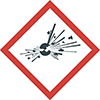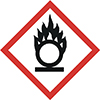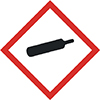The hazard classes describe the type of danger
- 16 hazard classes for physical properties
- 10 hazard classes for human health
- 1 hazard class for the environment (hazardous to waterways)
The hazard classes are divided into hazard categories according to their potential for danger.
28 pictograms indicate the respective hazardous properties.
They are complemented by
- two possible signal words (“Danger”, “Caution”)
- H statements = Hazard information (hazard statements)
List of hazard information - P statements = safety information (precautionary statements)
Please see the contents of the labelling for hazardous substances used:
- Chemical register
- New operating instructions
- Manufacturer information
- Poster H and P statements l Download
You can order this poster as an A0 print to hang in the laboratories from the Occupational Safety Expert.
Note: The stated subtitles are not part of the pictogram but have only an explainatory function in this case.
| Pictogram | ||||
|---|---|---|---|---|
GHS 01
| GHS 03
| GHS 04
| GHS 05
| GHS 09
|
| Explosive | Oxidizing agent | Compressed gas | Acidic l corrosive | |
GHS 02: Pictograms “flammable” | ||||
|---|---|---|---|---|
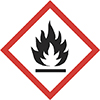 | 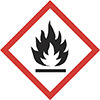 | 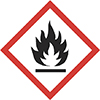 | 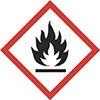 | |
| Flammable | Easily flammable | Extremely flammable | Self-igniting | |
| GHS 06: Contamination "toxic" | ||||
|---|---|---|---|---|
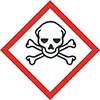 | 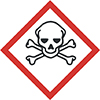 | |||
| Toxic | Life-Threatening Danger | |||
| GHS 07: Pictograms “exclamation mark” | ||||
|---|---|---|---|---|
 | 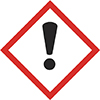 |  | 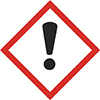 |  |
| Harmful to health | Damages the organs | Allergizing in contact with skin | Irritating | Anaesthetizing |
| GHS 08: Pictograms “Health hazard” | ||||
|---|---|---|---|---|
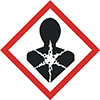 | 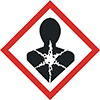 |  | 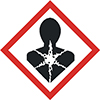 | 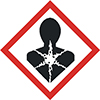 |
| CMR substance cat. 1 | CMR substance cat. 2 | Damages the organs | Allergizing when inhaled | Lethal if swallowed |
| Signal words | ||||
|---|---|---|---|---|
| Danger | Caution | |||
Please refer to the corresponding operating instructions for the required pictograms and signal words.
Labels of reagent bottles and chemical containers
Containers with hazardous content have to be marked with a label that includes all required information.
You can create these labels with the aid of the Word template on your own and order them at the KIM as self-adhesive labels. The Occupational Health and Safety Department covers the costs.
Please note that the original information of the manufacturer (physical data of the chemical substance on the labels) may not be changed or covered. The focus is on transitioning to the GHS system, which means “only” replacing the H and P statements as well as the danger pictograms.
Word templates for hazardous substance labels:
Download of the pictograms necessary via \\AFS\uni-hohenheim.de\home\hosseinz\sifa\SYMBIB.zip
The label includes 3 pictograms in the following hierarchical order:
- Position 1: Symbol for acute toxicity
- Position 2: Symbol for CMR attribute or additional symbol for acute toxicity
- Position 3: Symbol for physico-chemical attributes
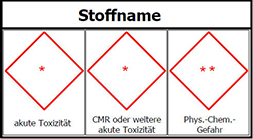 | 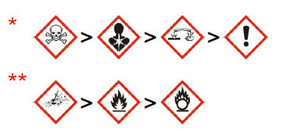 |
Special case: Reagent bottles in laboratories
A simplified labelling system is applied for reagent bottles in laboratories.
List of modified danger symbols for reagent bottles in laboratories
Pictogram sticker
You can order the required pictogram sticker for the labelling of the hazardous substances needed via the order form. The Occupational Safety Expert that also assumes the costs.

